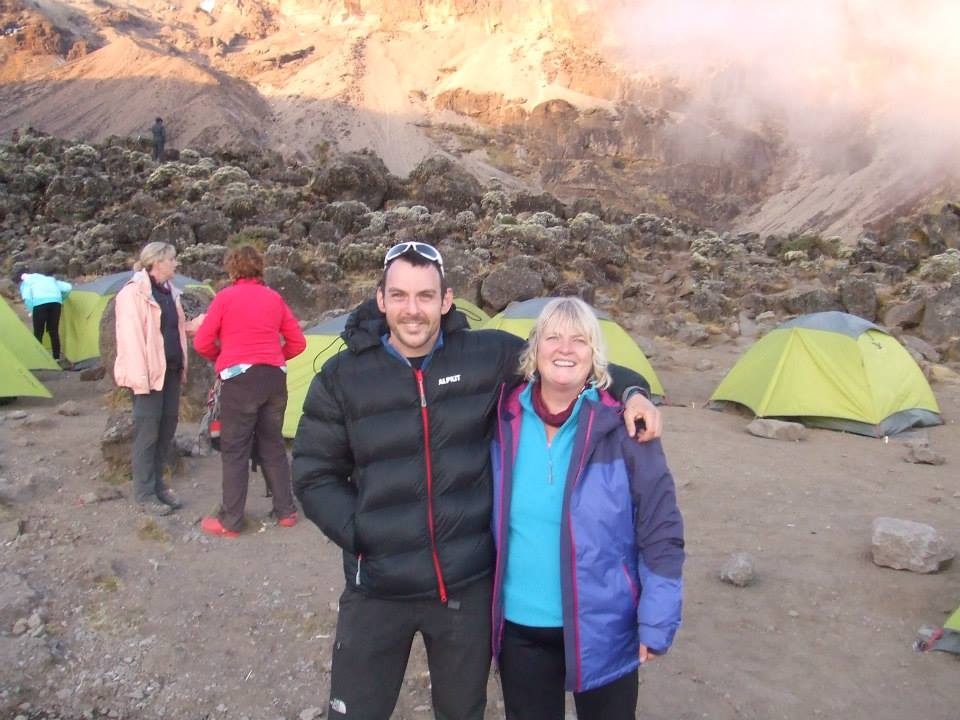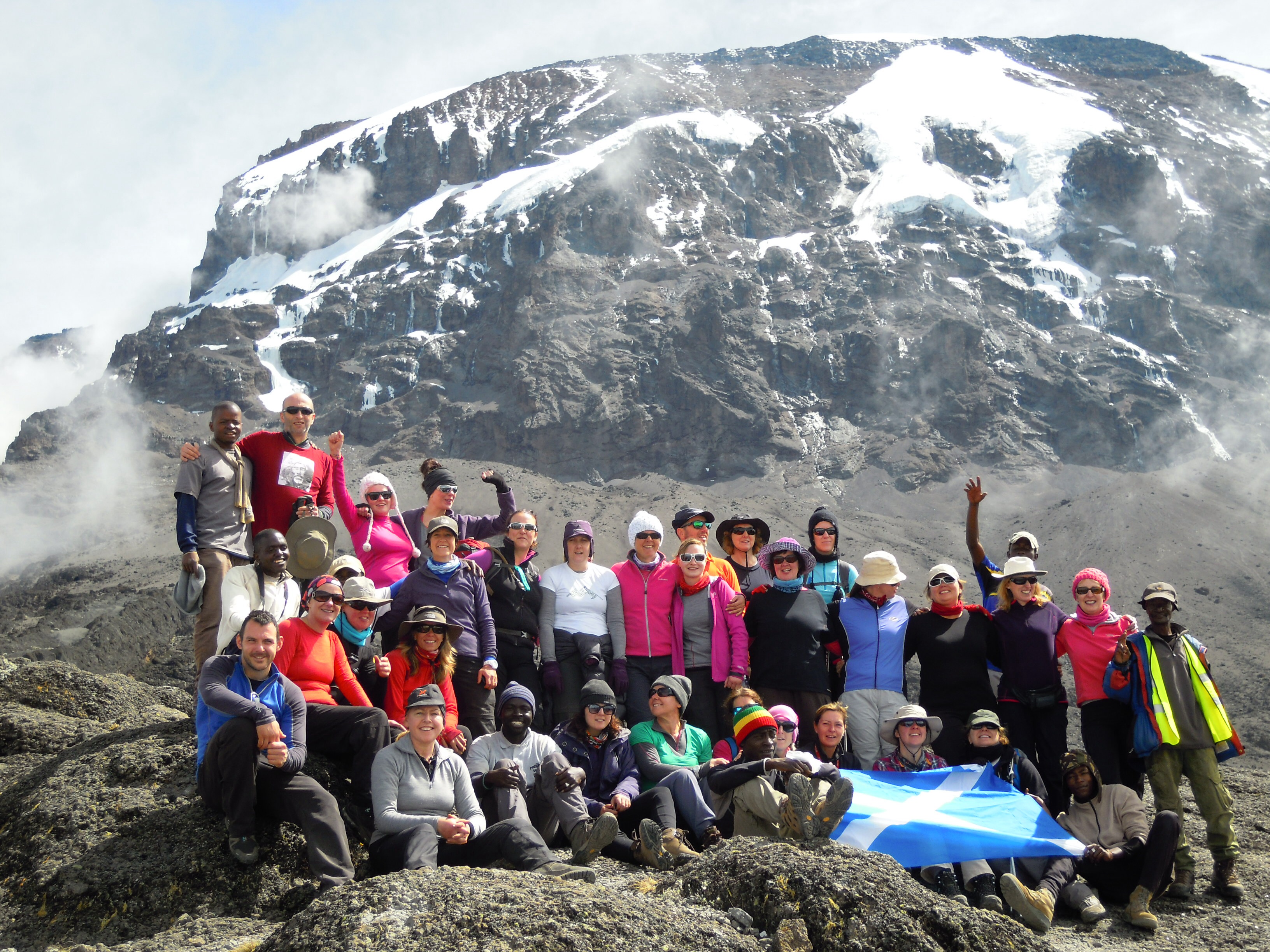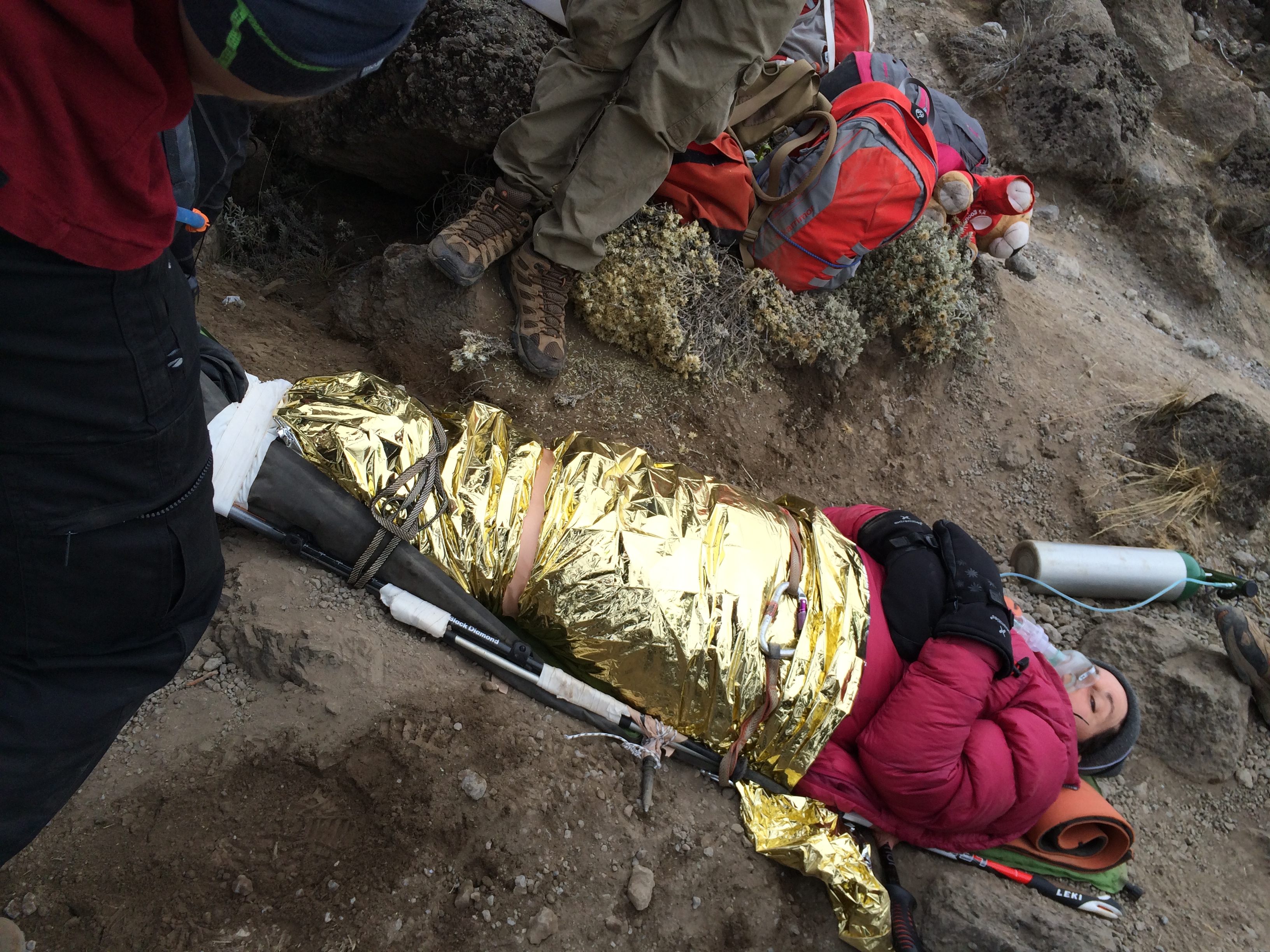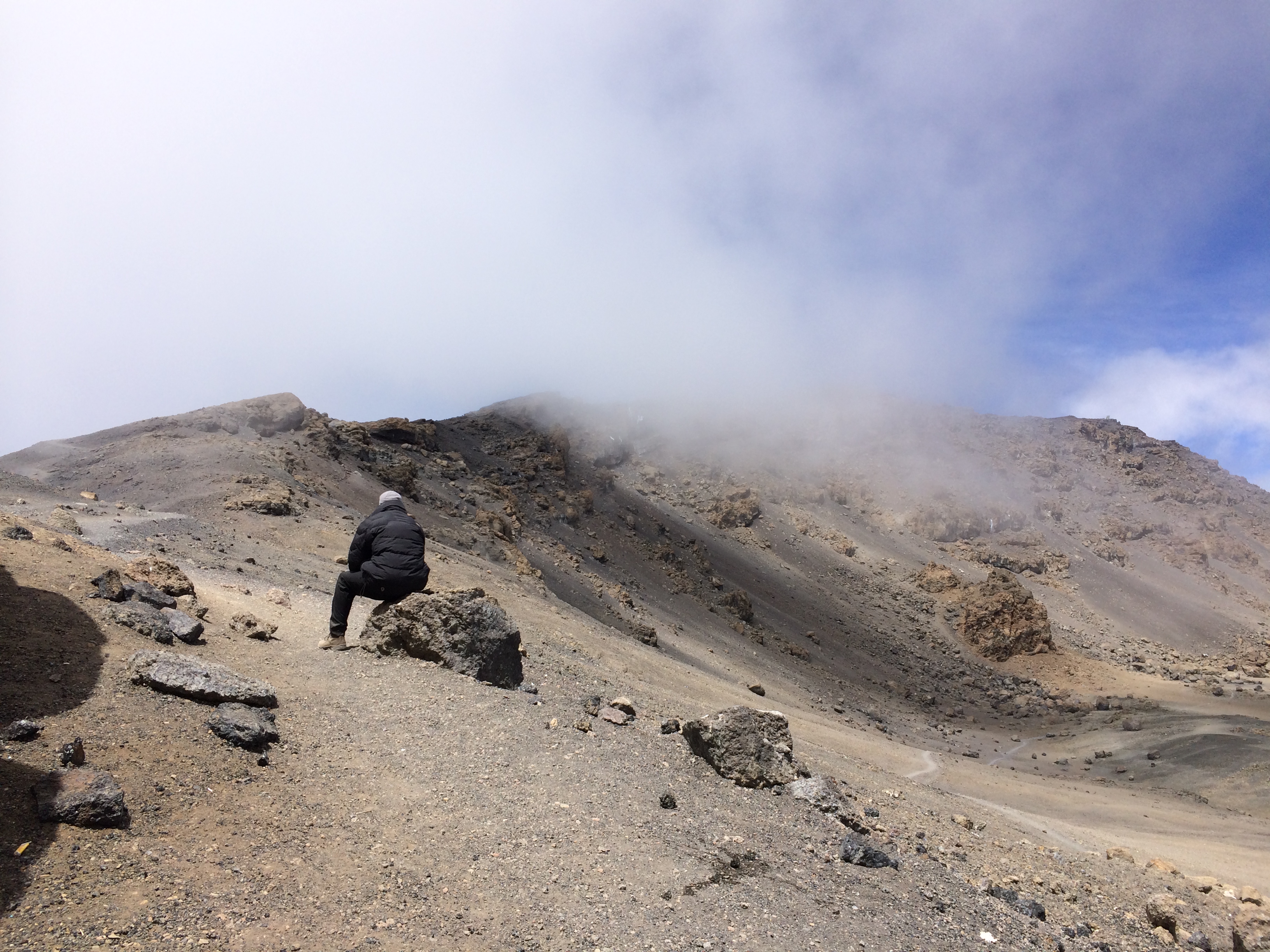
For the past year Kilimanjaro had been at the back of my mind without really paying too much attention to it as we focussed on building Breaking Strain as a company. Then suddenly the time was here and I was scrabbling about last minute to get my personal kit together to take up the hill. That was a couple of weeks ago. I always think it’s worthwhile leaving a bit of a gap between finishing a challenge, race or event to gather your thoughts, identify any learning points and generally take stock of what went on.
I had been asked by Lynne McNicoll from the Edinburgh-based kid’s cancer charity It’s Good 2 Give to co-lead the charity trek to Africa’s highest point with a large group of trekkers who sought to reach the combined fundraising target of £100,000. An impressive amount but one which I knew was certainly achievable as Lynne is nothing short of determined and a phenomenal fundraiser (prior to setting up It’s Good 2 Give she raised £450,000 for Teenage Cancer Trust in the space of four years). It’s Good 2 Give is seeking to build a purpose-built retreat for kid’s with cancer and their families and having secured land for the building in a stunning location the money raised on the trek would go a long way to help the charity’s overall aim of raising £1 million to fund the build.
After an acclimatisation day which allowed the group to meet, test kit and experience some of the local culture the groups headed out onto the hill proper. This account of the trek is obviously personal and might differ slightly from others based on everyone’s different levels of experience, perceptions and where we were on the mountain at any particular point. A lot of the time (and I’m pretty sure folk were sick of me saying it), ‘it is what it is’ and sometime you just need to get on with it and endure a certain amount of discomfort. Twelve or so years of doing relatively stupid things has maybe skewed that perspective and makes me fairly happy with a tent and sleeping bag at the end of a day’s walking.

Day one: Machame Gate to Machame Camp (height: 3000 metres). Kilimanjaro dominates the landscape: from the lodge’s sun terrace to the drive to the Gate it can be seen like the perfect mountain poking from a bank of clouds. We left from the Machame Gate after a rigorous signing in process and a gauntlet of pedlars pushing Kilimanjaro tat and had a good first walk through the jungle on a surprisingly well-maintained timber shuttered path. Very steep in places but with the guides calls of ‘pole pole’ (slowly, slowly) ringing in our ears it encouraged me to rein in the pace. This was something I had to get used to over the course of the trip. Unlike the winter racing where there was a time limit to reach specific checkpoints by there was no cut off and if a day took 12 hours, it took 12 hours. That night we were introduced to our guides and porters who would ensure we reached the summit (or as far as we were able to go). Camped at a decent 3000 metres with the sky almost luminescent with stars. Physically I felt no ill effects from the climb or altitude at this point.
Day two: Machame Camp to Shira Camp (height: 3800 metres). The landscape and vegetation changed from the mature, creeper-hung trees of day one to shorter trees and boulders with some absolutely stunning views. Steep slopes and a blazing sun made the day very hard for some. Water consumption went through the roof and a few of the trekkers ran out with a decent way to go. I went back with a water bottle for the following group which was a mistake which I would pay for later as I ascended too quickly after and received a crippling headache at the evening camp for my efforts. I only managed a bowl of the cook’s amazing pumpkin soup for dinner before having to lie in my tent which re-emphasised my thought process prior to arriving that altitude could affect everyone and that I might not make the summit because of it.
Day three: Shira Camp to Barranco Camp (height 3950 metres). Today was an acclimatisation day with an ascent to Lava Tower at 4600 metres and then a descent down to a lower overnight camp. The reasons for this are that by ascending to the high point it allows your body to experience the altitude and the lower amounts of oxygen before descending to the point where the air is thicker. The majority of the walk up to Lava Tower was over a boulder strewn moon-scape. Most people felt at least some altitude symptoms and some had crippling headaches & nausea. Pleasingly after the night before I felt pretty good with only a slight headache and at 4600 metres a tightness in the chest. Everyone’s mood was lifted at Lava Tower, however, by the cook who produced chips and chicken curry for lunch. After lunch we descended from the high point of Lava Tower to our camp at 3950 metres, with amazing views of the summit with a blue glacier on the left shoulder and a clear view of the Barranco Wall which we’d tackle on day four. This is genuinely the most stunning location for a camp – view of the summit and the sun shining on the tops of the clouds, as we were now well above the cloud layer.

Day four: Barranco Camp to Barafu Hut (height 4600 metres). This really was a day of two halves. Initially two of the trekkers decided that they had reached the highest they were going to and descended. We tackled the Barranco Wall immediately after breakfast and before the sun could crest the bulk of Kili. The Barranco Wall had been touted as a climb to still the heart but in reality it probably sat somewhere between a Grade 2 or 3 Scottish scamble and despite a 200 metre drop from the top, enroute to it you were never hugely exposed being protected by a parapet of rock before the drop at most times. Again, this is perspective and for some people who had never done anything like this it represented a huge challenge which they duly smashed. And enjoyed at the same time; proving that taking yourself out of your comfort zone is actually pretty decent.

Immediately on the descent from the top of Barranco Wall one of the trekkers, Cathy, suffered a totally innocuous fall on scree and broke her left leg. Before I could get to her the local guide had already removed her boot and it was clear that the leg was broken. Twelve years in the fire service has taught me to try to create a semblance of order from a chaotic scene and assisted by one of the trekkers, Rhona, an ICU nurse and part of the mountain rescue team in the Tweed Valley, we managed to stabilise the scene by administering oxygen (despite the porter’s reticence to do this) and immobilising the ankle using a compression bandage and a make-shift splint utilising the bottom section of a walking pole. I had asked the guides to radio down to our group who were further down the mountain to ask Graham, an orthapedic surgeon, who was part of the trekking team to come back to us. Unfortunately due to the language barrier the guides didn’t pass on my full message and he wasn’t informed of the issue, effectively arriving blind to the scene. With his help we then constructed an improvised stretcher from an inflatable Thermarest mat and four walking poles taped and tied together using cord. A fifth walking pole was used to create handles for us to carry the stretcher.

We were very lucky to have someone of Graham’s medical knowledge and expertise and he was able to quickly assess Cathy’s lower leg. It was also quite gratifying to see other trekking groups stop to see whether they could assist. Thanks should definitely go to one of the trekkers who gave us another space blanket and the German doctor who stopped to administer pain relief. I reflected later that from the guides and porters perspective they stop because next time it could be their client who is injured and they’d want assistance. The porters and guides also appear to be a big community and although they’re all fighting to get the next contract this is forgotten when someone needs help. All we then had to do was get Cathy down to Karanga Camp where we’d be able to assess her fully and come up with a plan of action. The only problem was that there were several miles of rocky, steep terrain and we were at high altitude. Myself and Graham started off assisting with the make-shift stretcher until the porters brought a proper stretcher from lower down the mountain.
It’s important to emphasise how hard carrying a casualty off a mountian is, if only to underline what incredible athletes the guides and porters are. It’s my first time of doing it and my hands and arms were aching pretty quickly from the improvised handles and I struggled to keep pace with the locals who were mountain goat sure-footed. From day one we had seen the porters passing us on the steepest sections with their hands in their pockets, carrying impossible weights either balanced on their heads or shoulders, (20 kilograms was quoted many times by different people, in addition to their personal kit which could weigh up to 15 kilograms in a rucksac). Now they turned their impressive ox-like strength to extricating Cathy in conditions that deteriorated rapidly making it treacherous underfoot. Rhona made a telling comment that in the UK we’d be looking for anchor points to assist lower casualties down off the steeper sections with ropes but these guys merely created a human conveyor belt down the mountain. Maximum respect.

Once we reached Karanga Camp, I spent a frustrating twenty minutes attempting to speak to the insurance company via satellite phone to arrange a helicopter to come and evacuate Cathy from the hill. In the end Julius, the lead guide, managed to make contact through the office in Moshi and a plan was hatched. Descending to Millenium Camp, Cathy would be airlifted down to the hospital in Moshi, however, when the porters and Cathy reached the camp the mist, which had lain heavy on the mountian from just after Cathy fell, had thickened and the helicopter wouldn’t fly. Cathy had to endure a hand-powered descent of the mountain arriving well after dark.
The rest of the group now ascended to Barafu Hut which would be our overnight camp. This was a long push for a load of the group as the symptoms of altitude started to take effect. I walked one of the trekkers into camp who was suffering badly with altitude symptoms including oxygen deficiency represeted by bluesness of the lips. Once there we were able to get some food and contemplate the summit that we would tackle after a couple of hours sleep.

Day five: Barafu Hut to Uhuru Peak to Barafu Hut (height 5,895 metres). Summit day. Due to the lateness of arriving into camp the night before, our start was pushed back to 3 am, by which point other summit groups were ascending the slopes above us, their progress marked by a trail of light from their head torches. A lot of the ascent is a blur as we walked through the night until the dawn broke behind us which might have been at about 5,200 metres. Up until that point I had been pretty much back-marking the group and had been feeling fresh and had been chatting and trying to keep folk’s spirits up but it seemed like I hit a wall in terms of tiredness and just wanted to sleep. As I tried to catch the lead group on a path that zigzagged up the world’s longest scree slope (it isn’t but just felt that way) I started using my poles which had been strapped to my rucksack up until that point. I then would take five or six steps and then have a snooze standing up with my head resting on the handles of my poles. For anyone who’s ever read any of my cold-weather race reports it seems that this is my thing. It happened at the Yukon Arctic Ultra, Arrowhead and also briefly at Rovaniemi earlier this year. Due to the lack of sleep the previous night my body had just shut down. I knew that I just had to keep going and eventually my body would decide ‘right you’re ready to go again’ and the sleepiness would fade. I banged in a couple of Pro Plus tablets to ease the process along. Coupled with this I was now doing a fairly impressive impression of Darth Vader, my breath coming out in rasps.
Stella Point sits at 5739 metres and it taunted us on that slope, never seeming to get any closer. But then eventually the green sign appeared. This crowned some people’s climb, an amazing achievement in itself and higher than any point in Eurpoe but it still sits 156 metres below Uhuru Peak which we could see when the clouds cleared. Reaching this point was an emotional time for several of the trekkers as they all had their own personal reasons for coming on the trek and raising the money for kid’s with cancer.
A smaller group left Stella for the relatively short walk to Uhuru Peak but at that altitude the pace was glacial, which was a coincidence as a huge glacier lay off to our left on the ascent. The scale of this was pretty deceptive but could quite easily have been seven or eight storeys high with caves of blue, columns of ice suspended from the walls and black striations showing where debris had become incorporated into the ice layers over time.

Arriving at the summit at 5895 metres allowed us to take photos to remind ourselves of being at the top of Africa but as they say, getting to the summit is only half way. The descent was long, boring and difficult, placing huge strain on the quads. One of the trekkers was rushed from Stella Point after the guides noticed the signs of altitude sickness, others had sore legs from the descent and everyone was tired and hungry having been up since early morning. We also hadn’t eaten anything other than the snacks we had taken with us and almost everyone had run out of water after being advised that 2-2.5 litres would be sufficient (I had four litres and had fiished all of it). At camp we discovered that all the food had been moved further down the mountain to Millenium Camp in anticipation of us descending for another two hours. At that point I had a fairly frank discussion with one of the lead guides that with darkness arriving, a couple of trekkers still above us on the mountain and everyone exhausted we would struggle to make it down to Millenium. Eventually we came to a resolution and it was decided that we would walk the extra distance in the morning.

The rest of the descent passed relatively seamlessly picking up four of the trekkers who hadn’t summitted and who had spent a scary night at Millenium with no radio communication to the camp above. One of the trekkers was suffering very badly from altitude sickness and had been unwell for several days. The young guide who was with them did amazingly well as he shared what food he had but had no means to communicate to Barafu Hut.
Personally, I felt this was a great challenge and something very different from stuff that I had taken part in before. It ticked loads of the boxes: something entirely new: check, difficult: check (although in a different way from going all out whilst racing), with a great group of people: check. So, all in all a great experience but with some key learning points that I will take away for Breaking Strain as we seek to start an overseas trekking programme in the future. Watch this space….











Comments
Well written lee, such a wonderful experience for us all to reflect on for the rest of our life, for me it was a personal challenge, and I am proud of what I achieved but also it felt wonderful to be part of a team who all became great friends and worked together as a team to get us to the summit, x
A thorough and frank representation of your hike which made for an excellent read. Thanks Lee and good job!